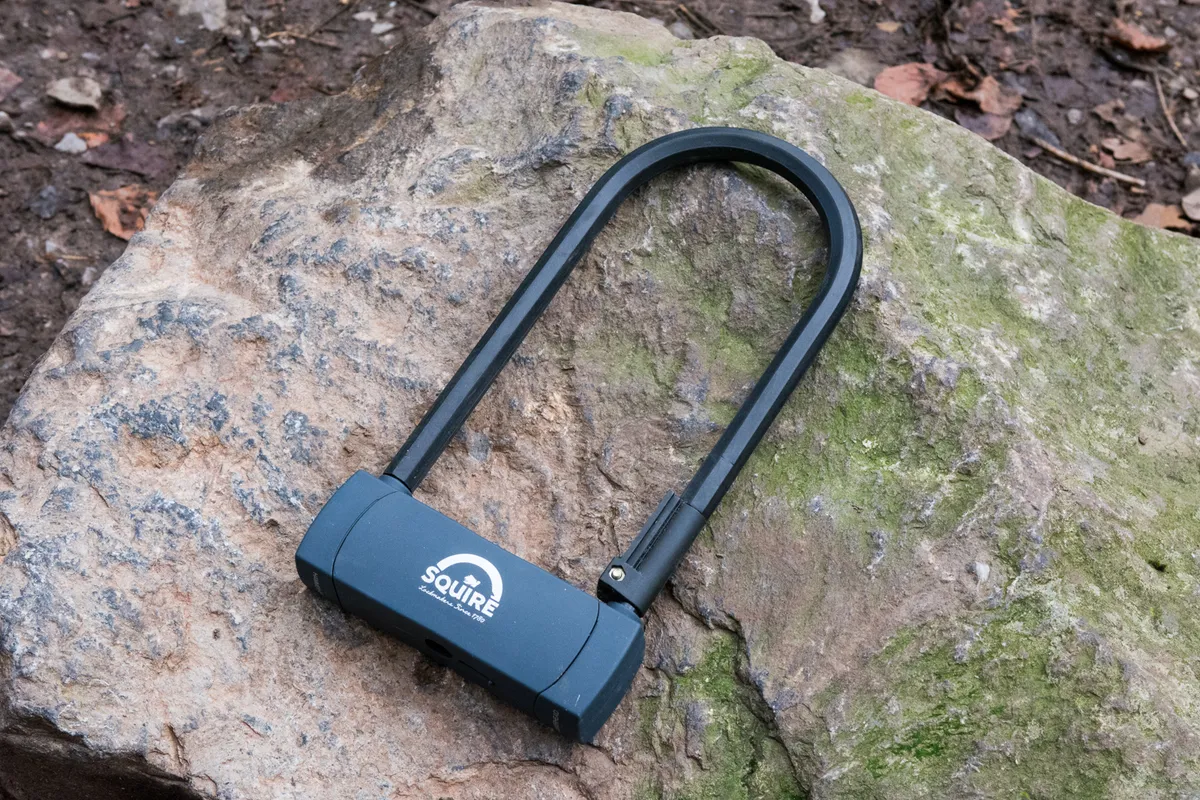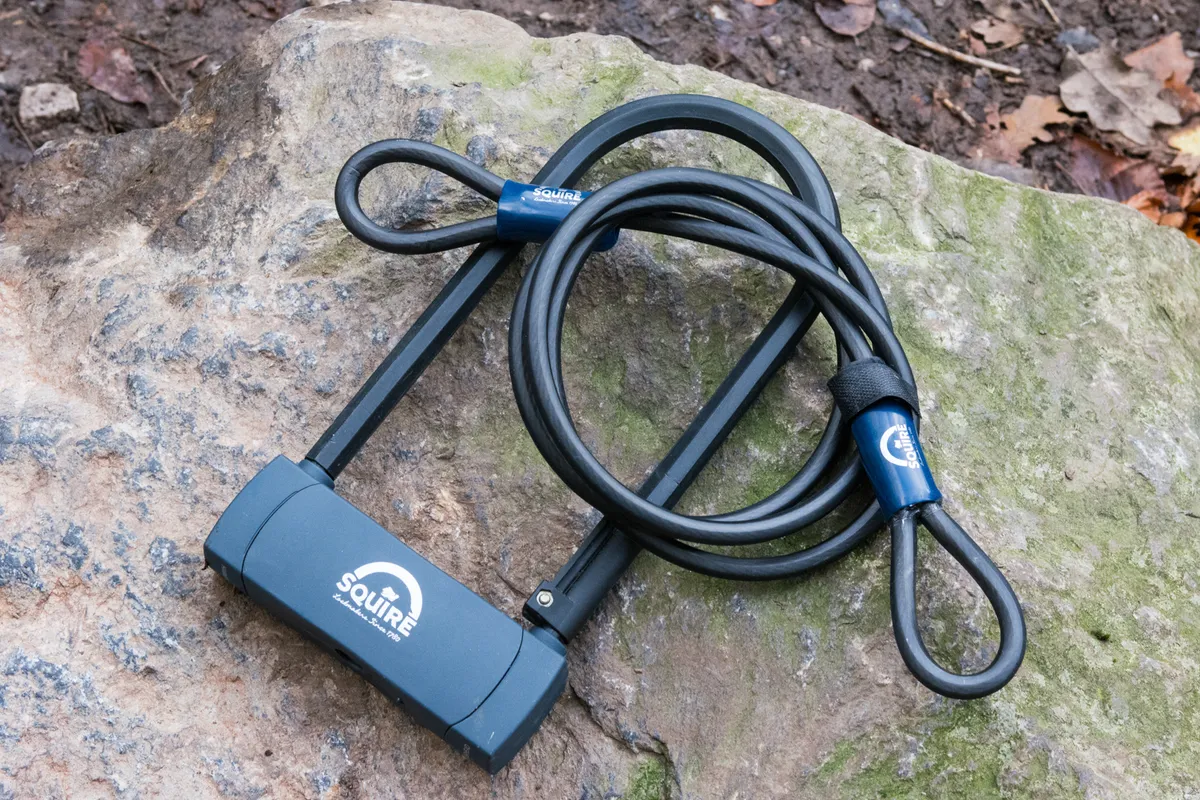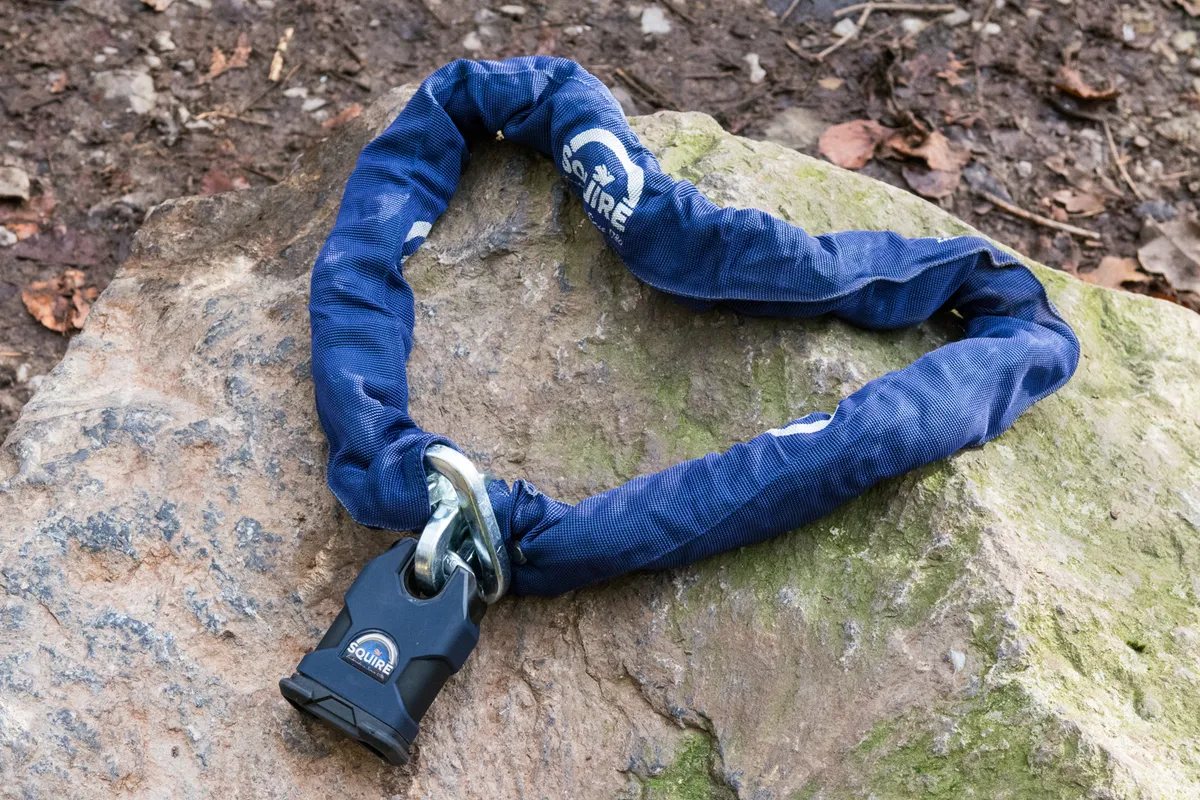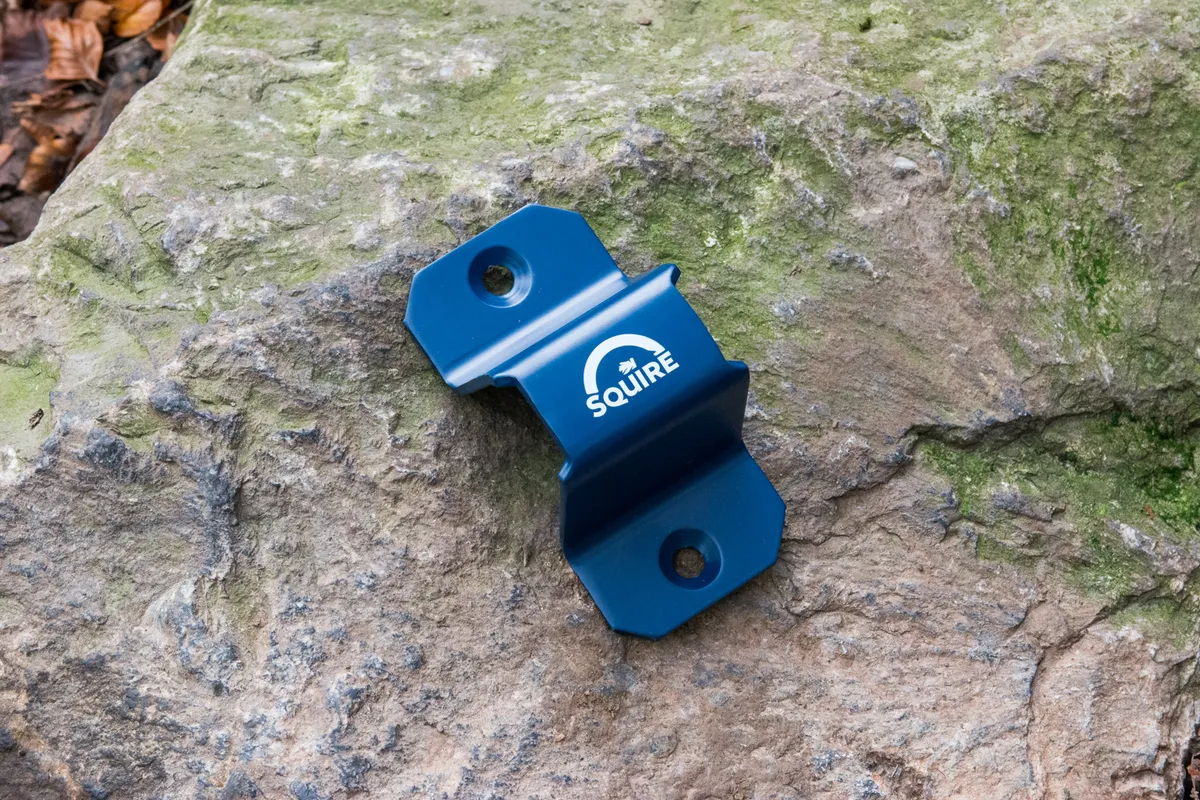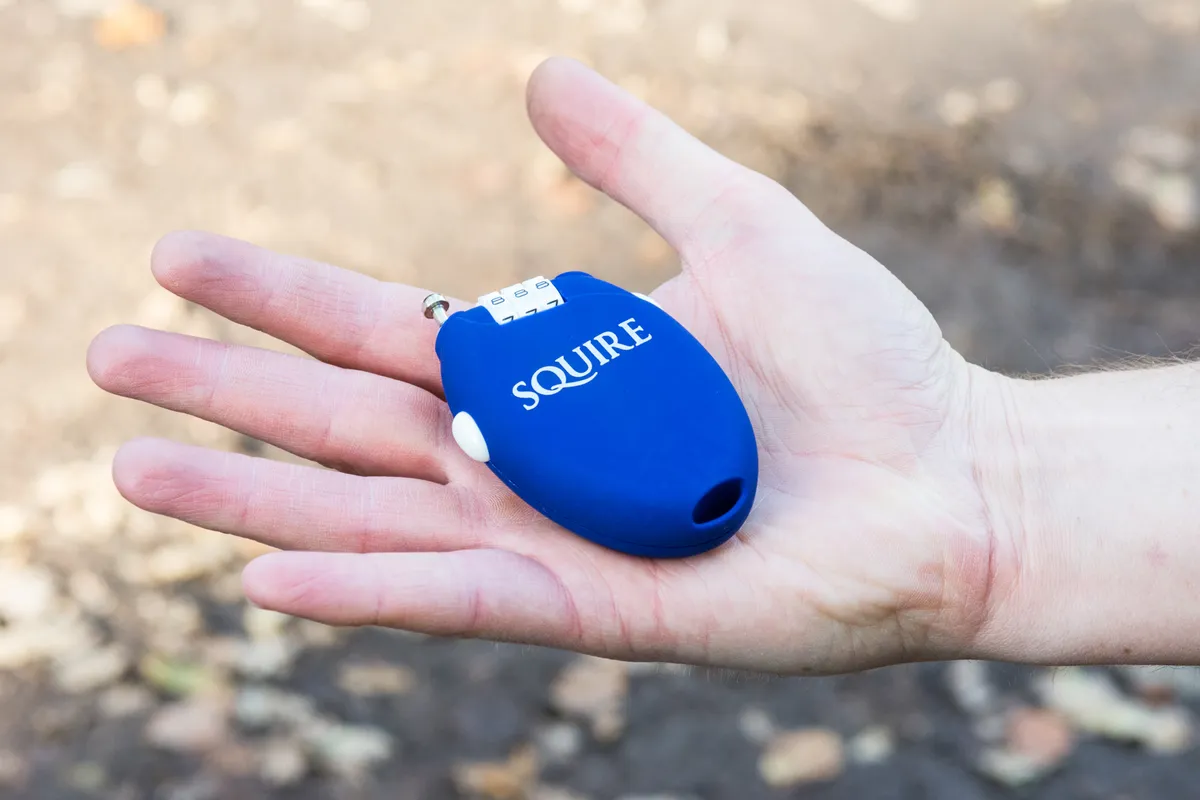It’s every cyclist’s worst nightmare – returning to your bike only to find a broken lock and no trace of your pride and joy.
The sad fact is that bike theft is an extremely common crime. In the UK, the Office for National Statistics says the number of bicycle thefts was 77,148 in 2022/23.
As a result, bicycle security is essential. Knowing how to lock a bike properly will keep you a step ahead.
Bikes are attractive to thieves because they are often of high value, left outside in insecure places and easy to move around, disassemble and dispose of.
Keeping your bike safe isn’t as simple as buying a cheap lock. There’s a lot to consider if you want to ensure your bike will still be there when you come back to it – some of which is obvious, and some less so.
We’ll run through where and how to lock your bike, the different types of locks available, and some top tips to keep your bike safe. You can also read our guide to the best bike locks.
How to lock your bike in 5 steps
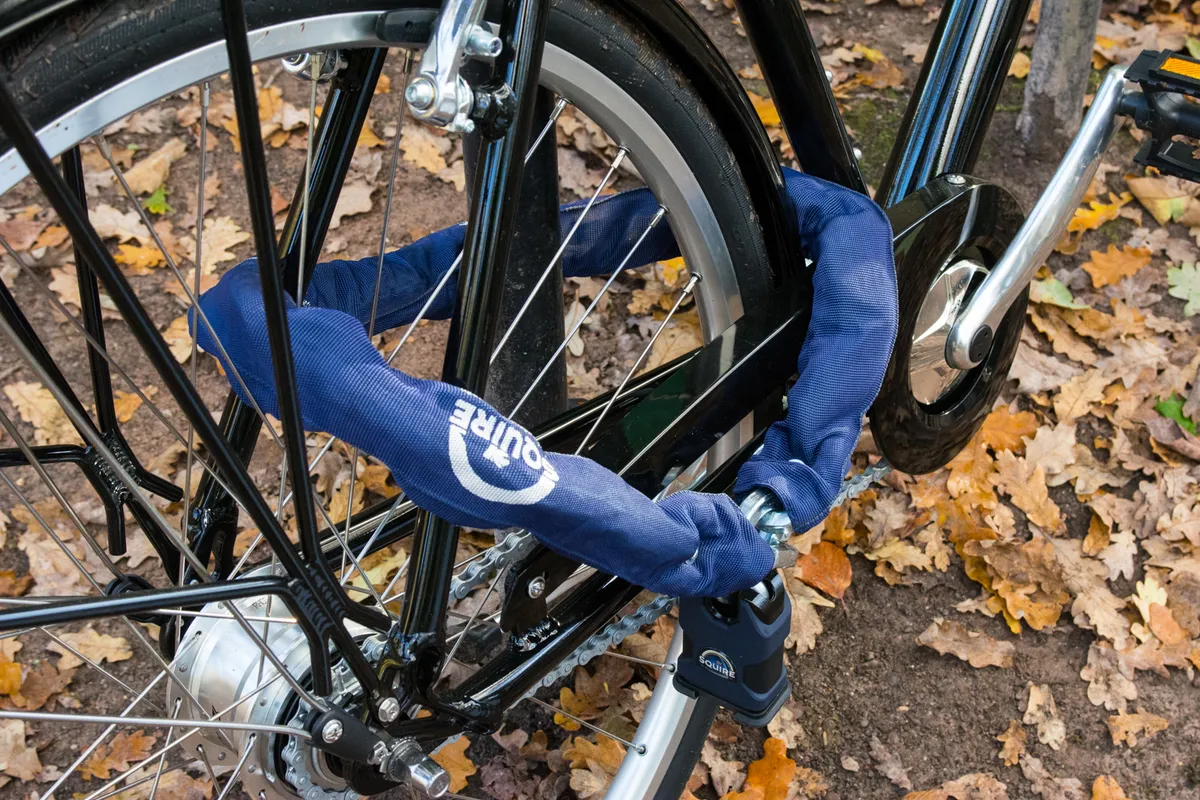
1. Lock your bike to an immovable anchor point, such as a bike stand or railings. Make sure the bike and lock cannot be lifted over the anchor point.
2. Use a quality lock (we’ll cover how to choose the right lock later) to secure your rear wheel and the rear triangle of the frame to your chosen anchor point.
3. Better still, use a second lock to also secure your front wheel (and ideally the front of the frame) because it’s relatively easy for a thief to undo the wheel and make off with it.
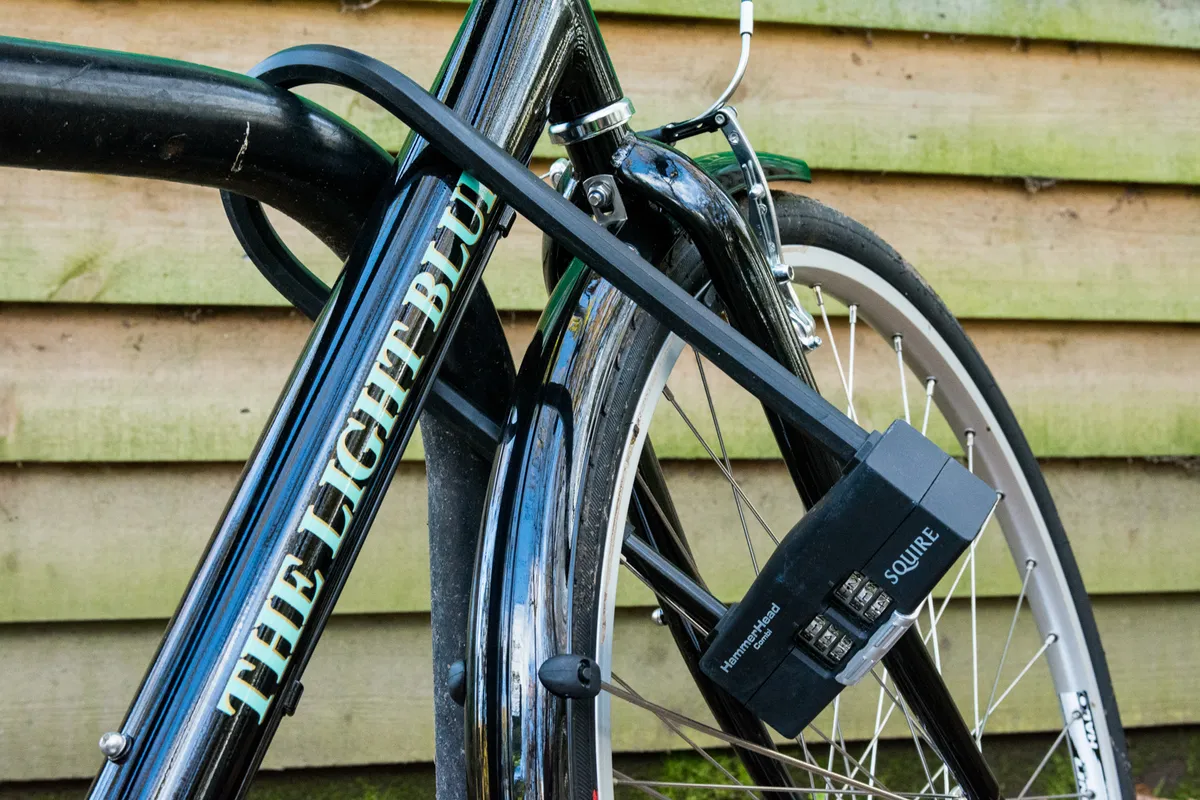
4. If you do use multiple locks, it’s worthwhile having locks of different types (for example, a D-lock and a chain lock, or a key lock and a combination lock). Vulnerabilities differ and a thief may have the means to break one, but not another.
5. If someone does try to break your locks, you want to make it difficult for them:
- Keep the locks off the ground so potential thieves can’t use it to gain extra leverage when using bolt cutters or as a solid surface for sledgehammers.
- Fit the locks as tightly around the frame and support as possible. Leaving too much room inside the lock will also make it easier for a thief to get the leverage required to break it.
Where to lock your bike
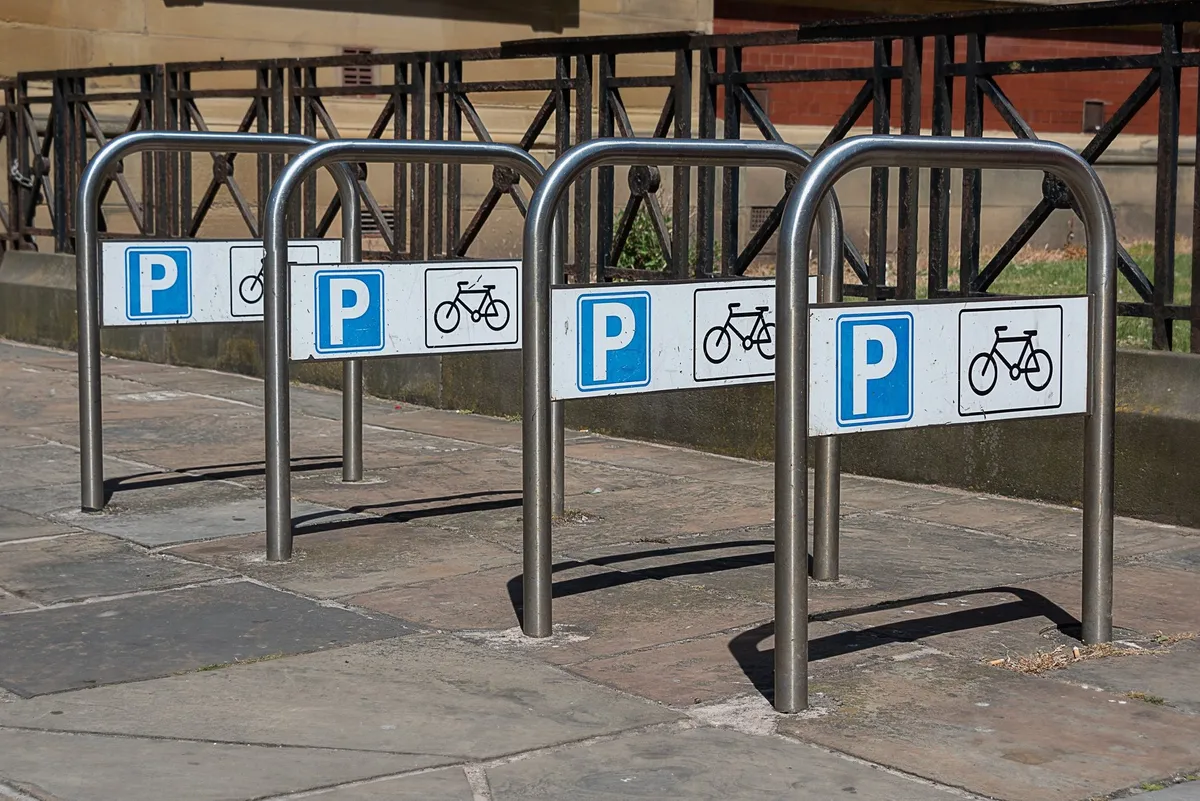
If you’re expecting to be away from your bike, even for a short time, you should secure it so a thief can’t just walk away with it.
Try to choose somewhere where there are people about, so if a thief needs to use tools to get through the lock it will be a bit more obvious. Also, check for CCTV coverage – banks and cash machines often have good surveillance.
If your bike is going to be locked up at night, choose a well-lit area where it’s difficult for a thief to hide. There’s safety in numbers too, so try to find somewhere where your bike isn’t the only one around.
Crucially, you need to lock your bike to an immovable object. If not, it’s relatively easy for a thief to take your bike somewhere quiet to deal with the lock.
A proper bike stand is great, but railings are an option too, although often building owners don’t allow this – pay attention to any signage.
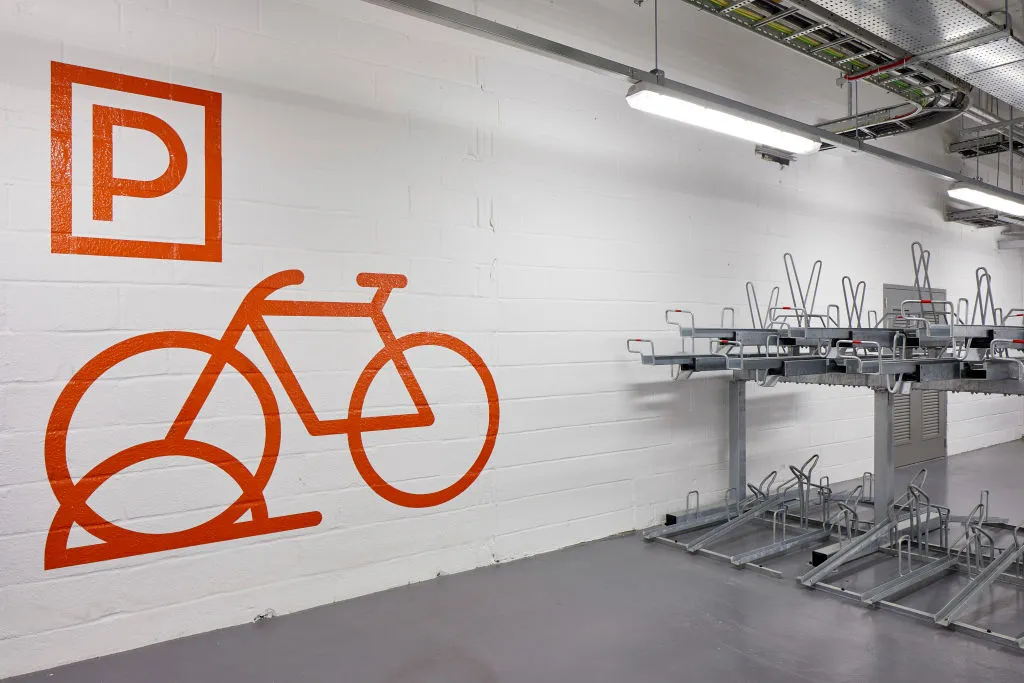
If you cycle to work, many workplaces will have bike parking on the premises, ideally covered by CCTV. You still need to lock your bike – don’t assume it’s secure just because it’s not easily accessible by the public.
You should also consider how secure your bike will be at home. Try to keep it somewhere where it’s not visible from outside, carefully consider your security settings on Strava, and consider fixing a ground anchor to your floor or wall, to which you can secure the bike.
We’ve also got plenty of advice on improving your shed security.
How not to lock a bike
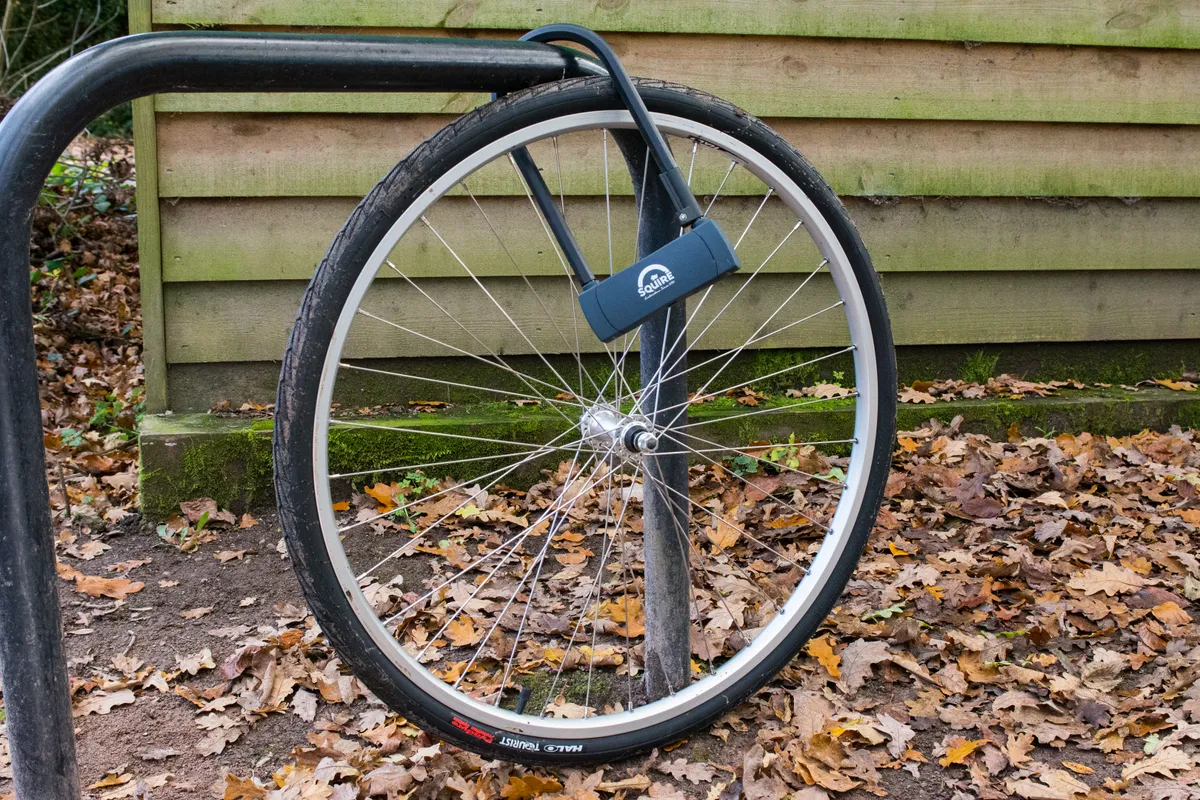
- Don’t lock your bike using only the front wheel. A thief can simply undo the wheel and walk away with the rest of your bike in seconds. A lonely front wheel secured to a bike rack is an all too familiar sight.
- Don’t lock your bike to another bike.
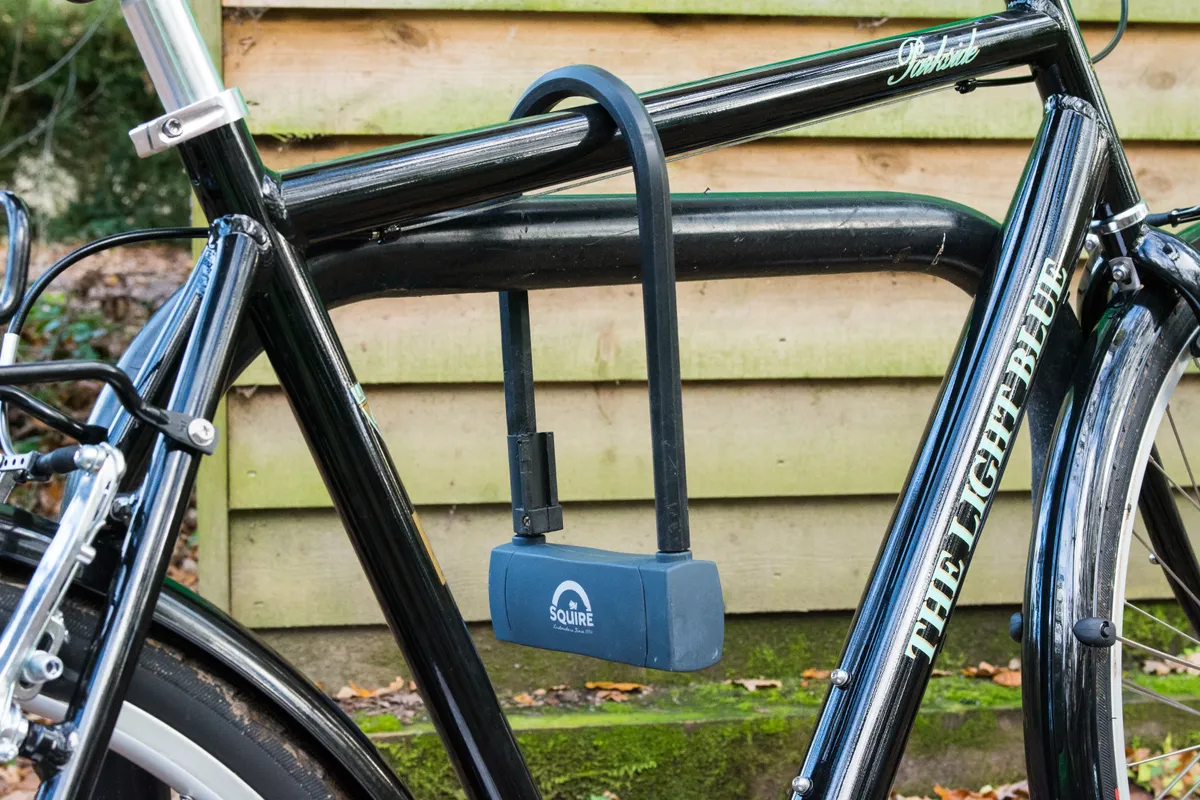
- Don’t lock your bike via only the frame. You’ll leave plenty of space inside the lock, making it vulnerable to attack, and a thief can steal your unsecured wheels.
- Before you leave your bike, double-check the locks are secured and you’ve fixed them around your anchor point!
Types of bike lock
What type of lock do you need?
There is a wide range of different lock types available, each of which have pros and cons, depending on your budget, the level of security required, where you’re locking your bike, and how transportable you need the lock to be.
When choosing a lock, you need to consider the value of your bike. An expensive bike is potentially more attractive to a thief than a cheaper model because it has a high resale value, either complete or for its parts.
A quality lock shouldn’t be an afterthought when you buy a bike and, as a rough guide, you should look to spend at least 10 per cent of the value of your bike on a lock, if you’re serious about bike security.
Weight is also an important consideration. A robust lock will be heavy to carry around, although many D-locks come with mounts to fix them to your bike.
If you’re usually riding to and from a single location, you might want to buy a robust (but heavy) lock to keep at your destination.
Locks can be secured with either a key or combination dial. You can even get locks opened via a smartphone app. In general, more secure locks use a key, although combination locks can be made secure too.
Sold Secure ratings
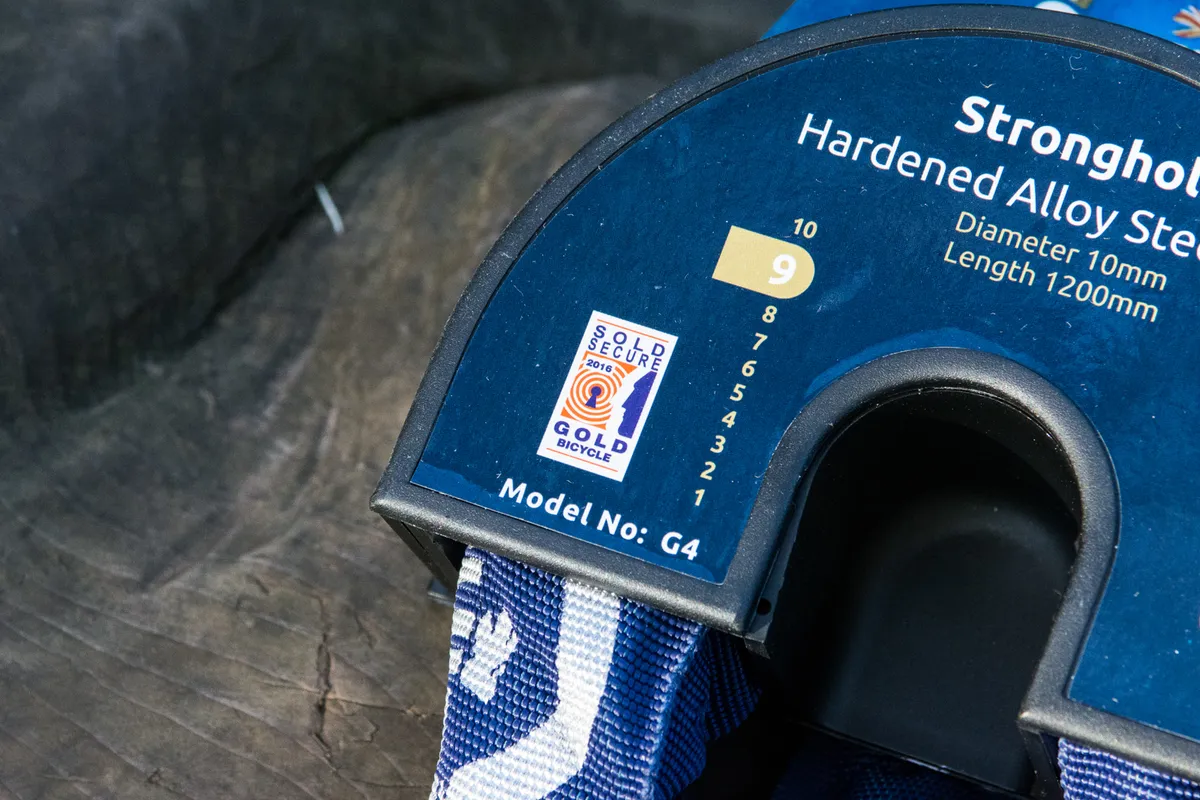
When you buy a bike lock, it’s well worth looking for a Sold Secure rating. Sold Secure locks are independently tested for how easily they can be broken into.
Sold Secure rates locks at gold, silver and bronze levels. A Sold Secure gold lock will be the most secure but pricy; a bronze lock may stop an opportunist thief, but not a professional one; while a silver lock will often balance security with price.
Bike insurance might specify that you use a lock with a Sold Secure rating to validate your policy.
Types of locks and how to use them
Unfortunately, professional bike thieves can eventually break pretty much any lock, or might leave your bike unusable in the attempt.
However, choosing the right lock and using it properly will make your bike much less likely to be a target.
Lightweight cafe locks
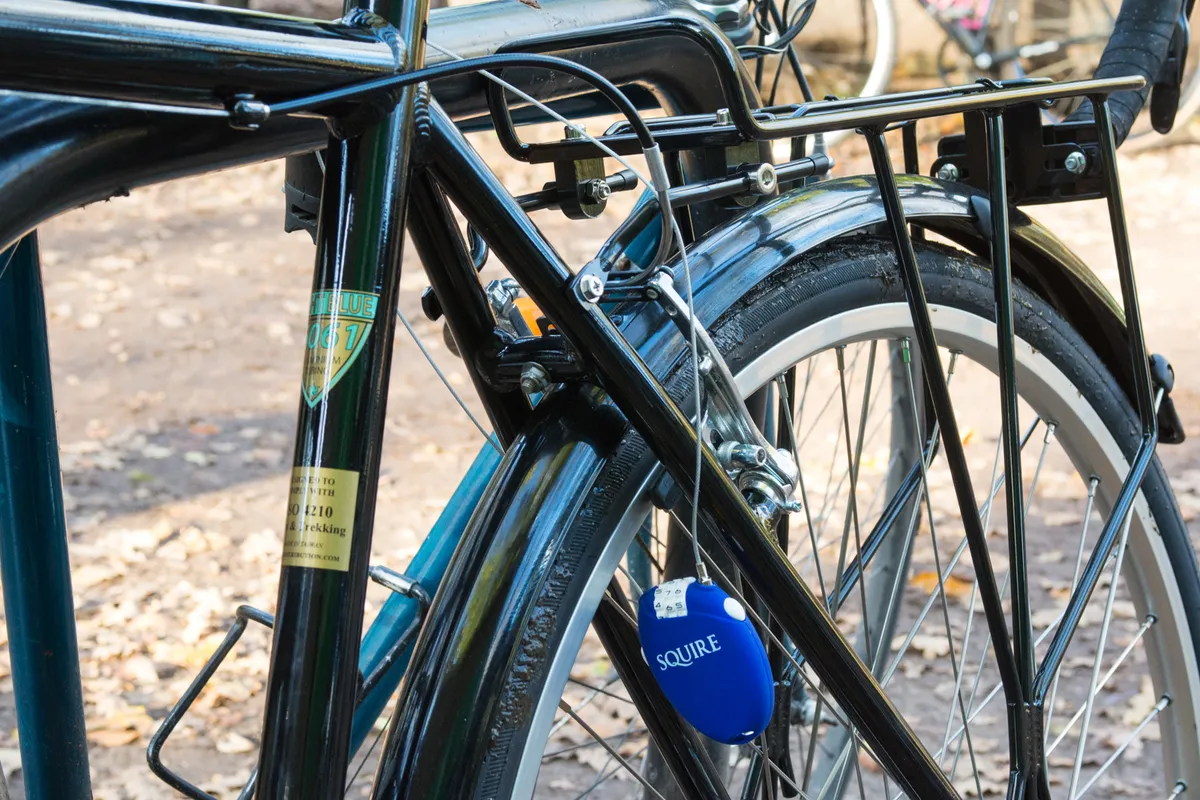
Let’s start with the absolute basics. The advantage of a lightweight cafe lock is, as the name suggests, its lack of weight. That makes it easy to carry around with you as you ride, either in luggage or, more likely, a pocket.
The flip side is that you get very limited protection. It’s usually easy to break a lightweight lock, sometimes even without tools or with a simple set of wire cutters.
So a lightweight lock is only a viable option if, for example, you want to immobilise your bike somewhere such as a coffee stop, and you and other people are likely to have it within sight most of the time.
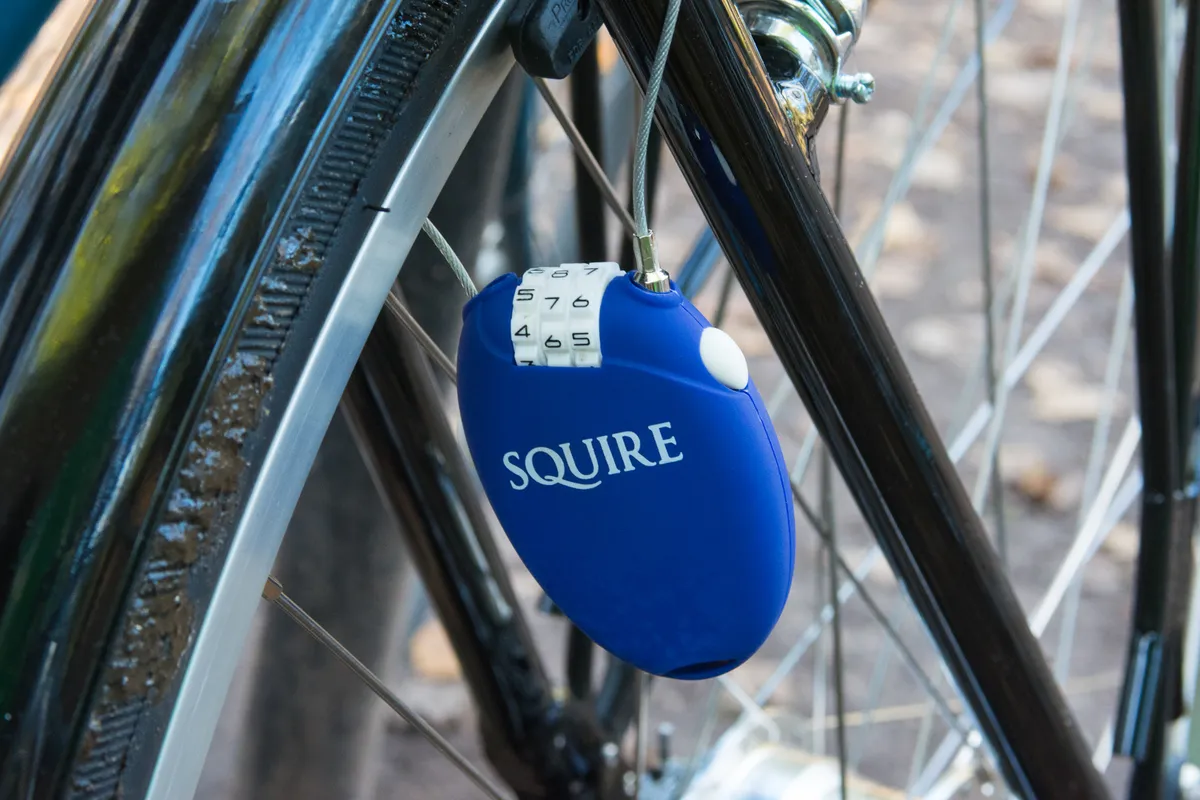
If you use a lightweight cable lock to attach the frame to a solid object, rather than propping it up outside the cafe, it will stop someone simply walking off with your bike
However, be warned: a lock like this should only be used for an extremely basic level of bike security. If you are planning to leave your bike unattended for anything more than seconds, or in a vulnerable place with any reasonable risk of theft, you’ll need a more secure lock.
Fortunately, you’ve got plenty of options.
D-locks
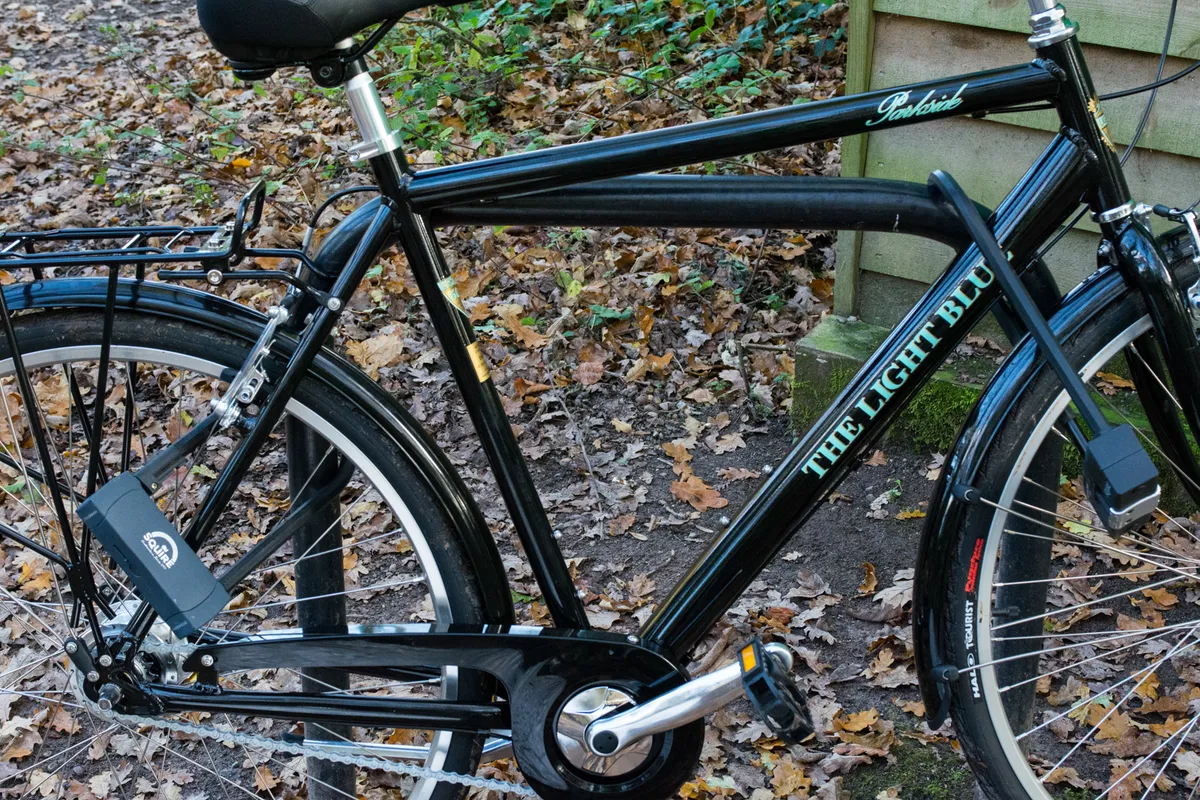
D-locks (sometimes referred to as U-locks) are popular with cyclists because they strike a balance between portability and weight. A D-lock can be mounted to your bike when not in use and provides a good level of protection, without weighing you down too much.
There’s plenty of choice when it comes to D-locks. Most will deter an opportunist thief, but look for a Sold Secure-rated lock for improved protection.
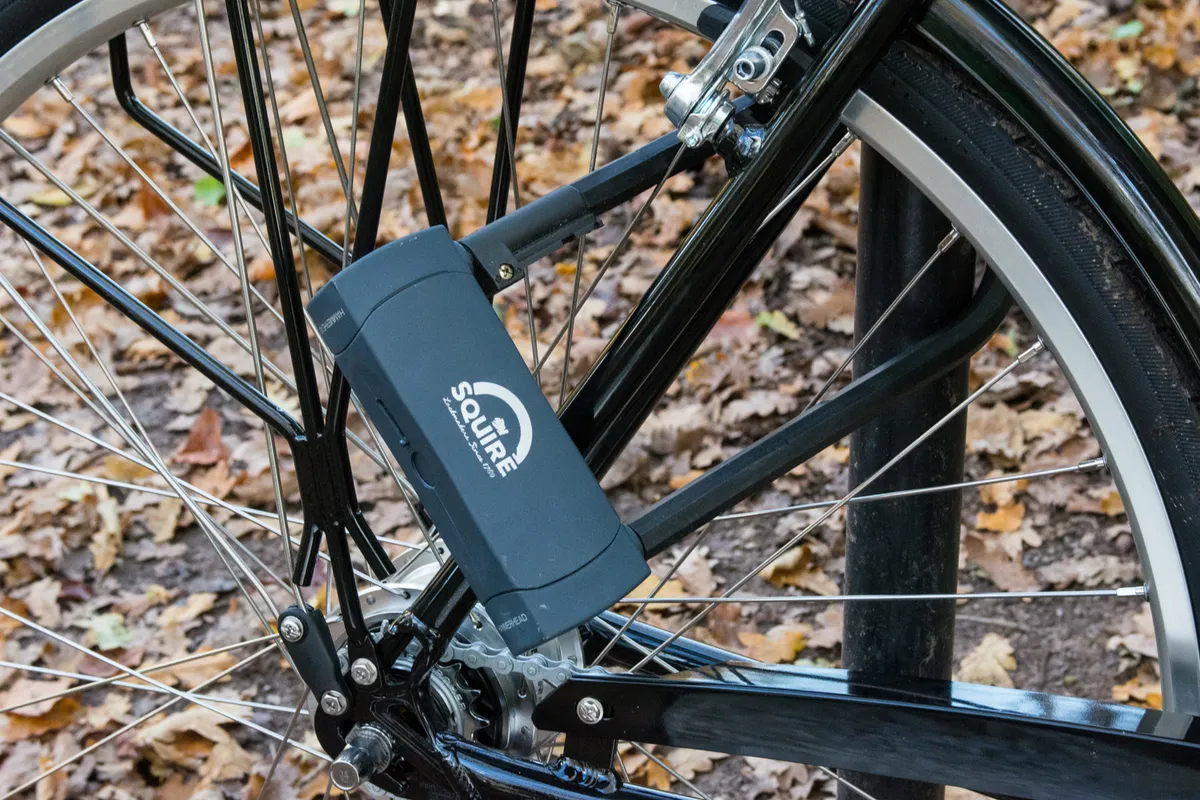
Remember to keep your lock off the ground and fill as much of the shackle as possible to protect against leverage attacks. A D-lock with a shorter shackle will help in this regard, but may make it more difficult to secure your bike.
Using two quality D-locks – one securing the rear wheel and frame, and the other securing the front wheel and frame – will provide a high level of protection.
Chains
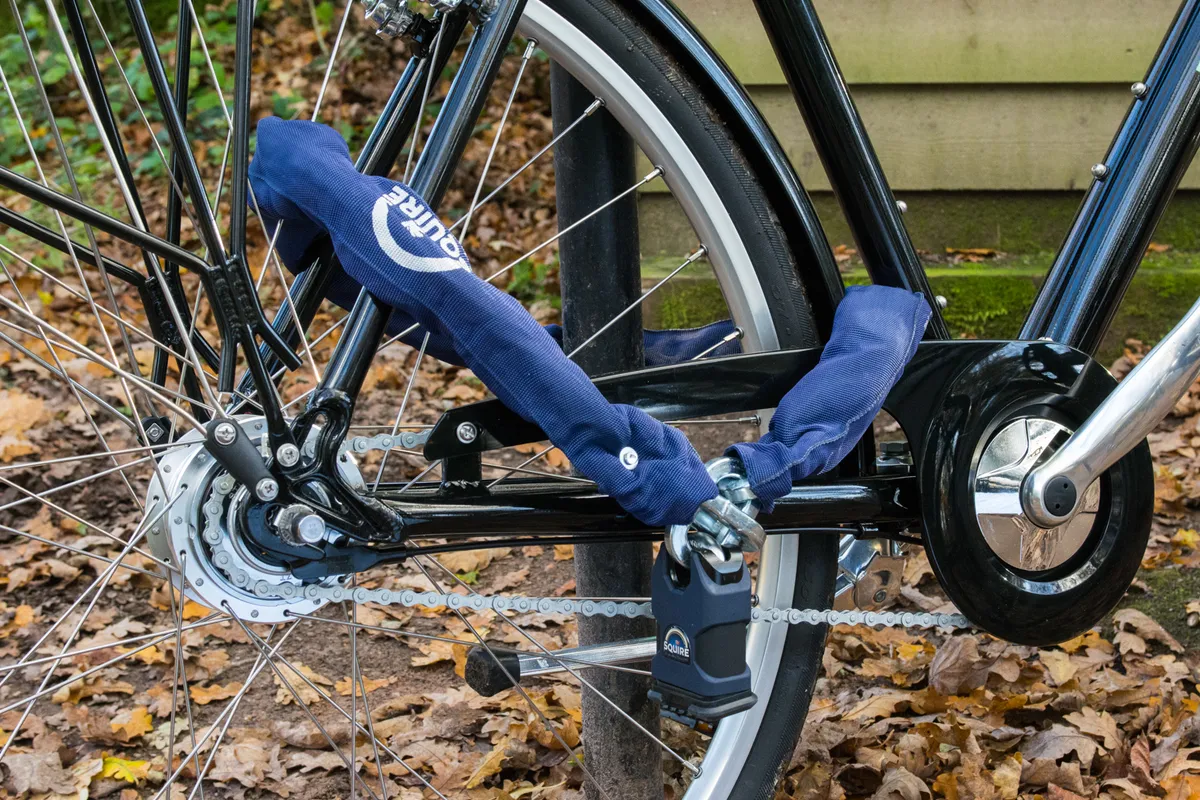
Chains are another popular option. The most secure tend to be heavy chain locks with hardened links.
A chain lock will often have a cloth sleeve around it to protect your frame (most D-locks are coated in plastic for the same reason).
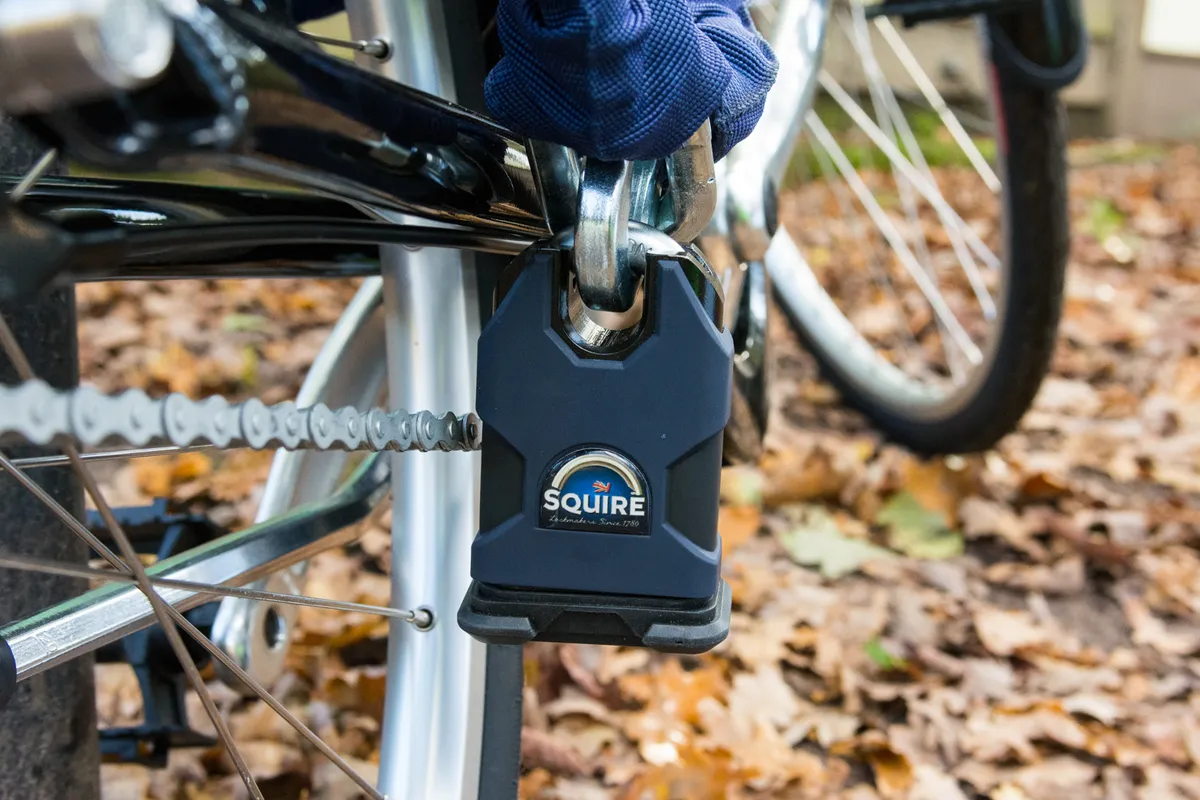
A chain lock has the advantage of flexibility, but can be heavy and cumbersome to carry with you. For ultimate bike security, look for a motorcycle chain (Sold Secure has a single tier for motorcycle products – gold).
You can also buy folding locks with joints in them. They are easier to carry, although the joints are vulnerable and need to be strengthened.
Cable locks
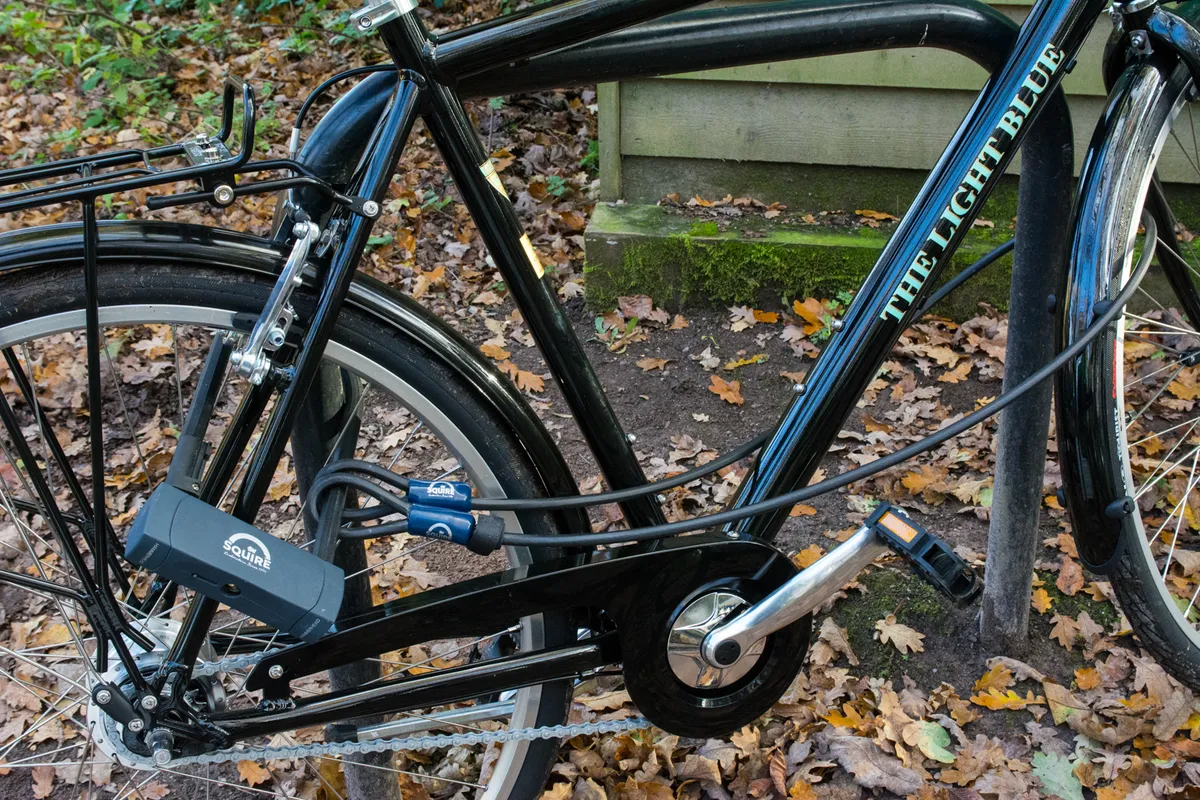
Another option is a standard cable lock. On its own, a cable lock is unlikely to be as secure as a chain or D-lock, but can be a useful addition alongside a more secure lock.
Some cables will come with their own locking mechanism, others will be looped at either end and designed to be used with a D-lock or a separate padlock.
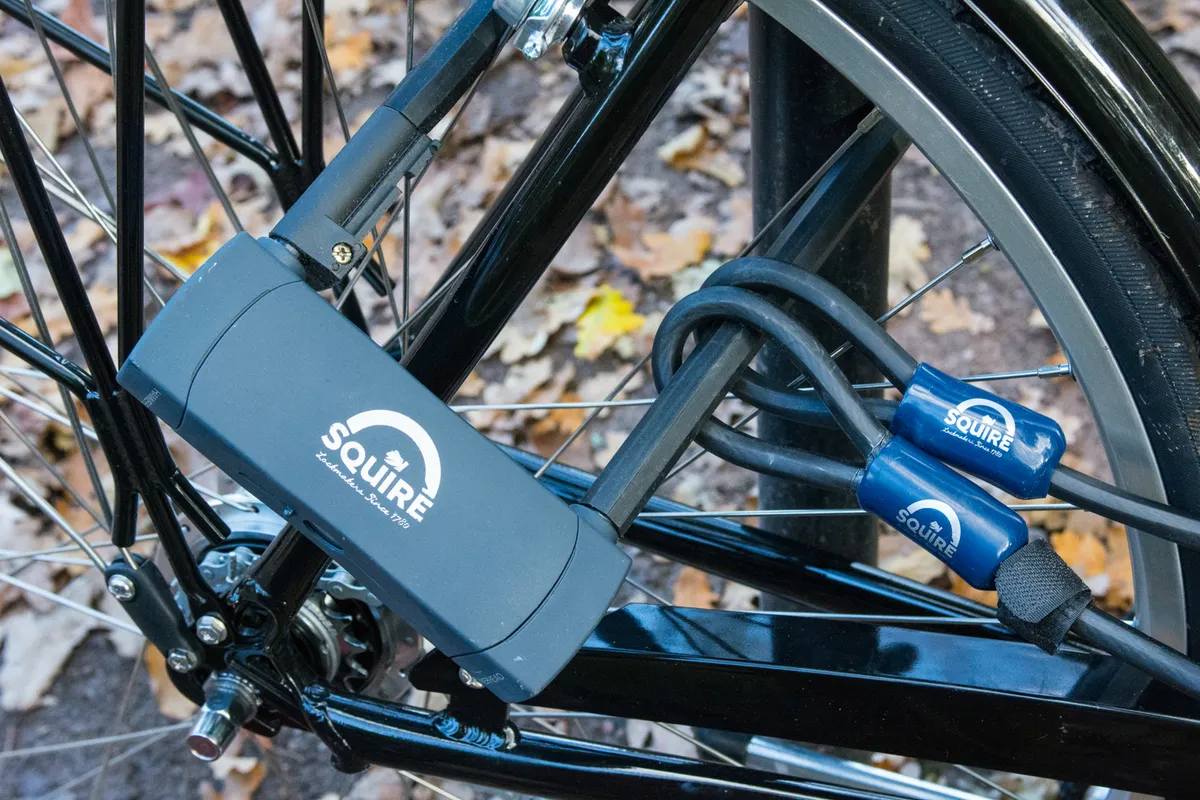
Using a cable lock in conjunction with a D-lock is a popular option and enables you to secure the frame and wheels at both ends of the bike, without carrying the weight of two heavy-duty locks.
Remember, however, that a cable lock is vulnerable to attack – it should be used as a deterrent, rather than a reliable way to secure your bike (or components) in high-risk areas.
A few more things to think about
Register your bike
If you lock your bike in public regularly, you should register it and get it security marked – the police offer this service for free.
Take photos of your bike
Take photos of your bike, so if it is stolen you can share those images with police and on social media, and have a higher chance of retrieving it.
It’s also worthwhile insuring your bike, for the additional peace of mind.
Secure your components
If your bike is going to spend significant amounts of time locked up in public places, consider getting locking nuts for the wheels, seatpost and other components.
It’s easy for a thief to unscrew parts and remove them, even if the frame is secure.
